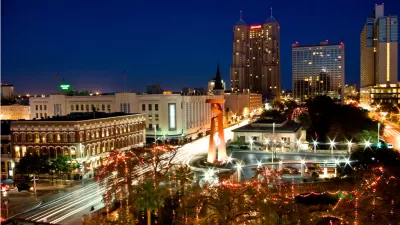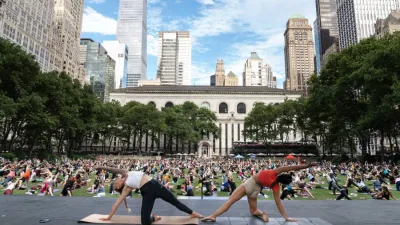The new American Dream will transform cities and towns in the 21st Century. To understand it, we have to grasp a few features of the previous American Dream.

The new American Dream will transform cities and towns in the 21st Century. To understand it, we have to grasp a few features of the previous American Dream, which created the metropolitan regions that we know today. That Dream is still operative — although it has faded a bit since the 2008 housing crash. A Pew study shows the country now evenly split between two visions of the good life.
There were many good parts to the 20th Century American Dream. It provided shelter for three generations of Americans. It delivered a house, a yard, and a car (later two or three cars) to most households. It also tended to separate society by income, reduce community connections through sprawl, and increase automobile and road costs.
The top tier of that American Dream was the McMansion. The front of the McMansion has what is called “curb appeal,” an effect not unlike what the peacock achieves with its feathers. The multiple gables, the big, little-used front lawn, the porch too shallow to sit in — all have little practical function.
Those are status symbols — as is the big, expensive car. You can’t walk anywhere from the McMansion. There’s nowhere to walk to. For the children who grew up in these areas, the shopping mall was the town square.
FULL STORY: Why 'place' is the new American dream

Planetizen Federal Action Tracker
A weekly monitor of how Trump’s orders and actions are impacting planners and planning in America.

Maui's Vacation Rental Debate Turns Ugly
Verbal attacks, misinformation campaigns and fistfights plague a high-stakes debate to convert thousands of vacation rentals into long-term housing.

San Francisco Suspends Traffic Calming Amidst Record Deaths
Citing “a challenging fiscal landscape,” the city will cease the program on the heels of 42 traffic deaths, including 24 pedestrians.

Amtrak Rolls Out New Orleans to Alabama “Mardi Gras” Train
The new service will operate morning and evening departures between Mobile and New Orleans.

The Subversive Car-Free Guide to Trump's Great American Road Trip
Car-free ways to access Chicagoland’s best tourist attractions.

San Antonio and Austin are Fusing Into one Massive Megaregion
The region spanning the two central Texas cities is growing fast, posing challenges for local infrastructure and water supplies.
Urban Design for Planners 1: Software Tools
This six-course series explores essential urban design concepts using open source software and equips planners with the tools they need to participate fully in the urban design process.
Planning for Universal Design
Learn the tools for implementing Universal Design in planning regulations.
Heyer Gruel & Associates PA
JM Goldson LLC
Custer County Colorado
City of Camden Redevelopment Agency
City of Astoria
Transportation Research & Education Center (TREC) at Portland State University
Jefferson Parish Government
Camden Redevelopment Agency
City of Claremont





























